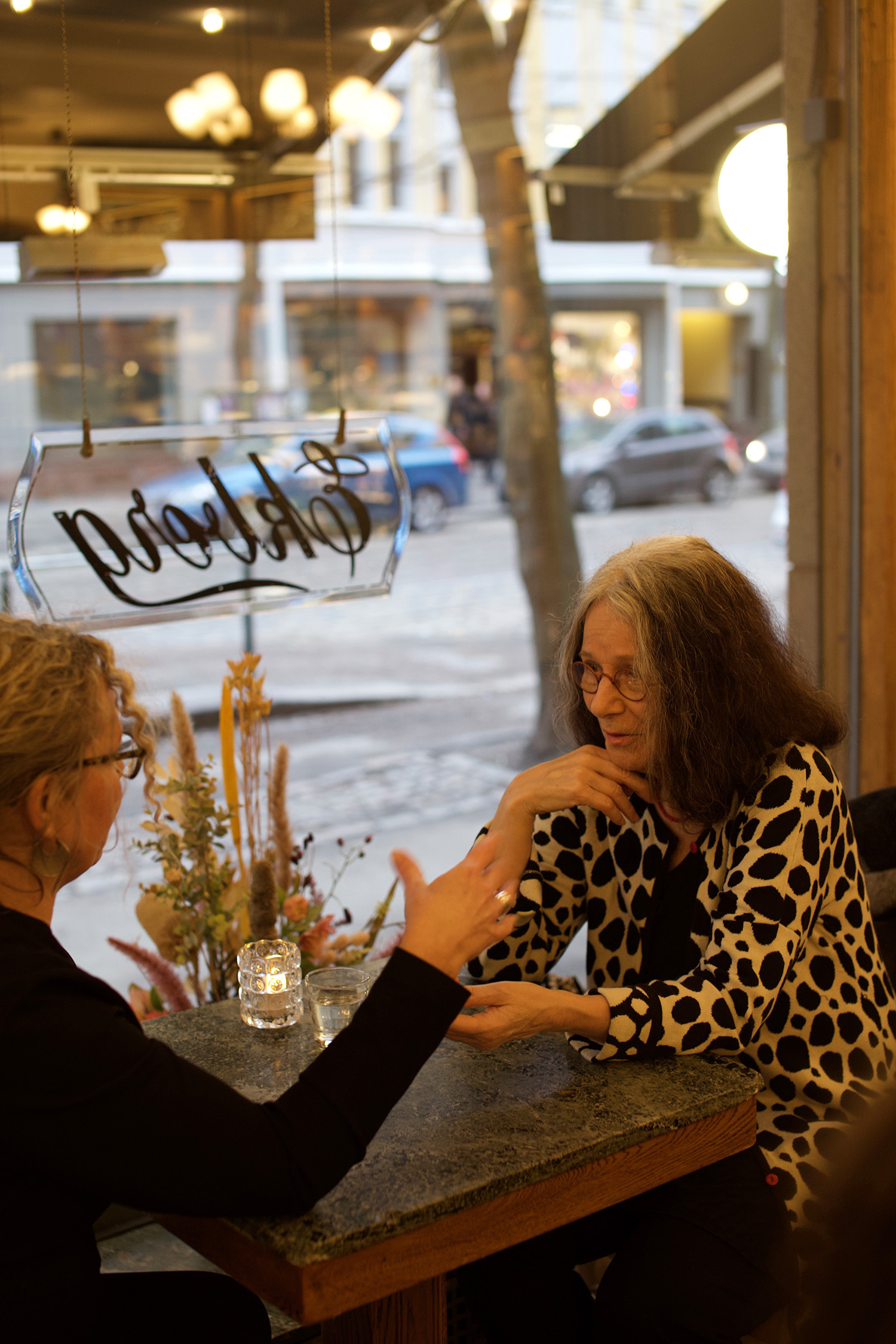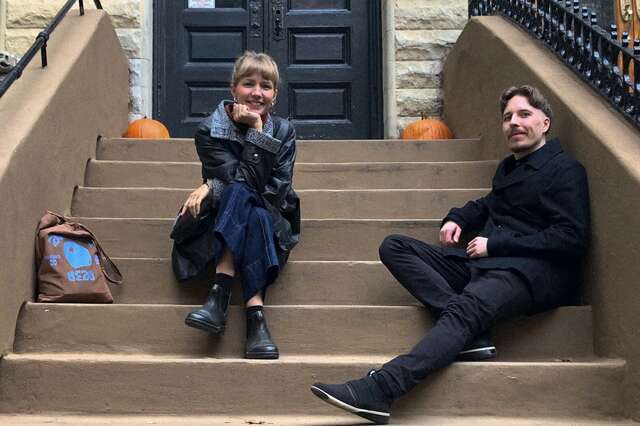Discussing Archinfo, part 1: An information centre for architecture is born!
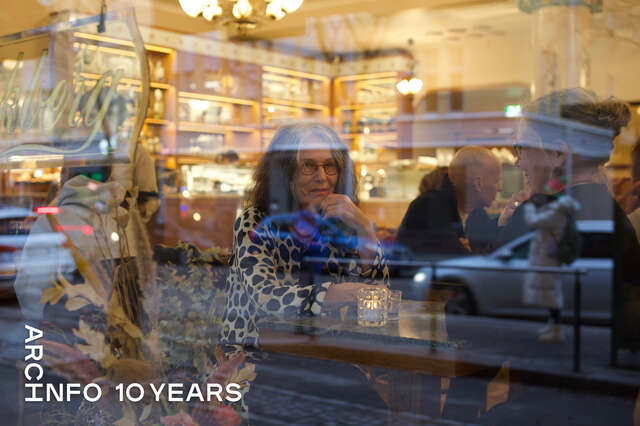
Linda Peltola
The Information Centre for Finnish Architecture officially started its operations in January 2013, but its creation followed almost a decade of work in the National Council for Architecture. Tiina Valpola, who also became Archinfo's first director, was a key figure in the creation of the new organisation. Miina Jutila had a conversation with Valpola in February 2023.
"Ekberg is the perfect place to reflect on the beginnings of Archinfo, as one of the earliest meetings to outline the role and nature of the new player in the field of architecture was held there," says Tiina Valpola, when I suggest a meeting in the historical cafe on the Bulevardi in Helsinki.
Valpola was the director of Archinfo from its creation until 2016, but it all started much earlier. So, let's go back in time all the way to 1998 when Finland was one of the first countries in the world to formulate a national architectural policy programme.
"When talking about the significance of Finland's first architectural policy programme, Apoli, I think the three most important lasting effects it generated were the emergence of local architectural policy programmes, the increased international recognition of Finnish architecture, and the establishment of the architecture information centre," Valpola sums up.
The 1998 Apoli was a joint effort by the field of architecture. After the turn of the millennium, the position of Special Advisor for Architectural Policy was created at the Arts Council of Finland – now the Arts Promotion Centre Finland – to support the monitoring and implementation of the programme. The work was carried out under the National Council for Architecture and financed as a separate Apoli project. Tiina Valpola, an architect with extensive experience in the field of architectural and cultural organisations and in promoting architectural policy at both national and EU levels, was appointed to the task.
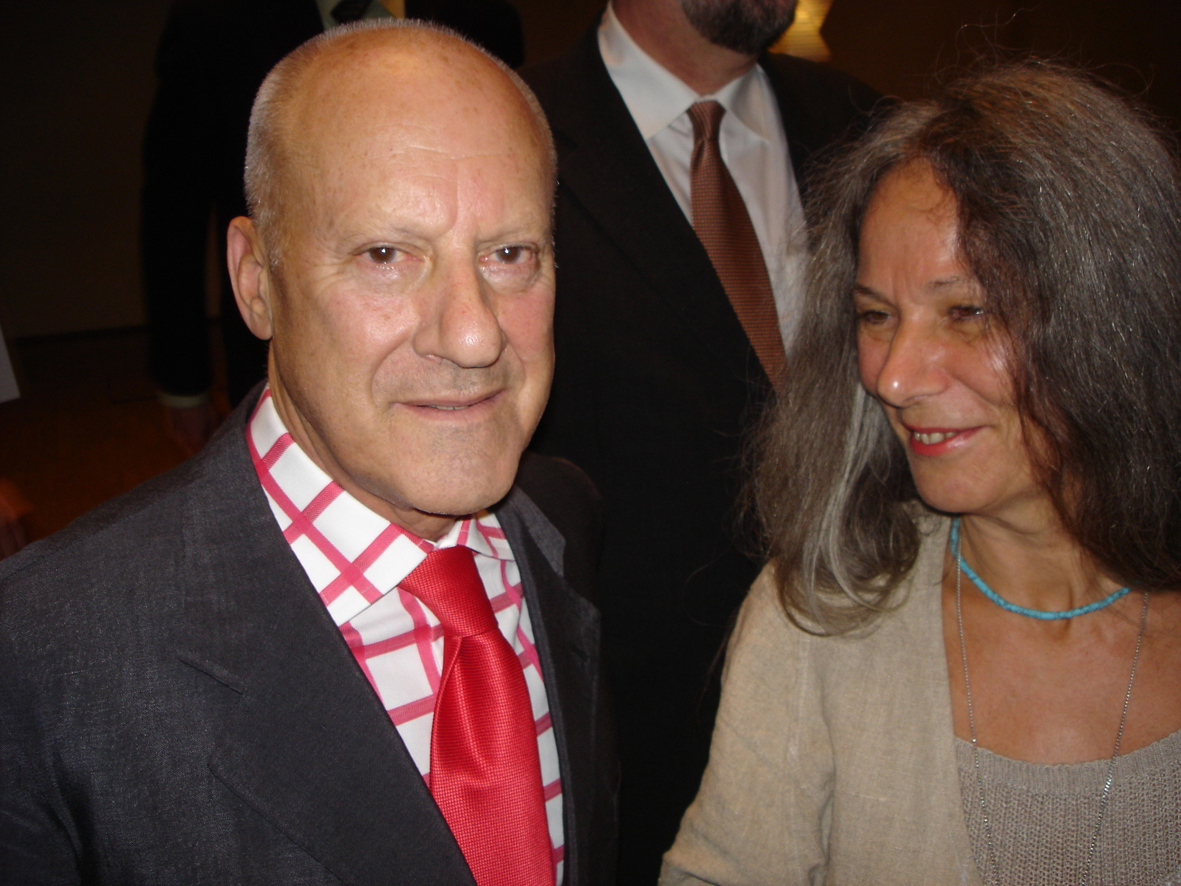
According to Valpola, the establishment of the Information Centre for Finnish Architecture was a direct result not only of the architectural policy programme but in particular, of the active promotion of architectural policy by the National Council for Architecture.
"The role of Anna Brunow, architect and Chair of the National Council for Architecture, was central in this process. When the post of special advisor was created, Matti Rautiola, board member of the Council and Director General of Building Information Foundation, said that Finnish architecture now had its own national telephone number," recalls Valpola.
"When that phone rang for the first time, the caller was the Speaker of the Parliament of Finland, Paavo Lipponen."
Relentless lobbying
Valpola's role as a special advisor required close cooperation with international networks and ministries, particularly the Ministry of Education and Culture and the Ministry of the Environment. Over the years, Valpola repeatedly brought up the need for an information centre for architecture – after all, seven other arts disciplines had long had their information centres.
"The main bottleneck was organising the funding. Existing information centres were concerned that the new player would not increase the overall funding but would instead reduce their financing."
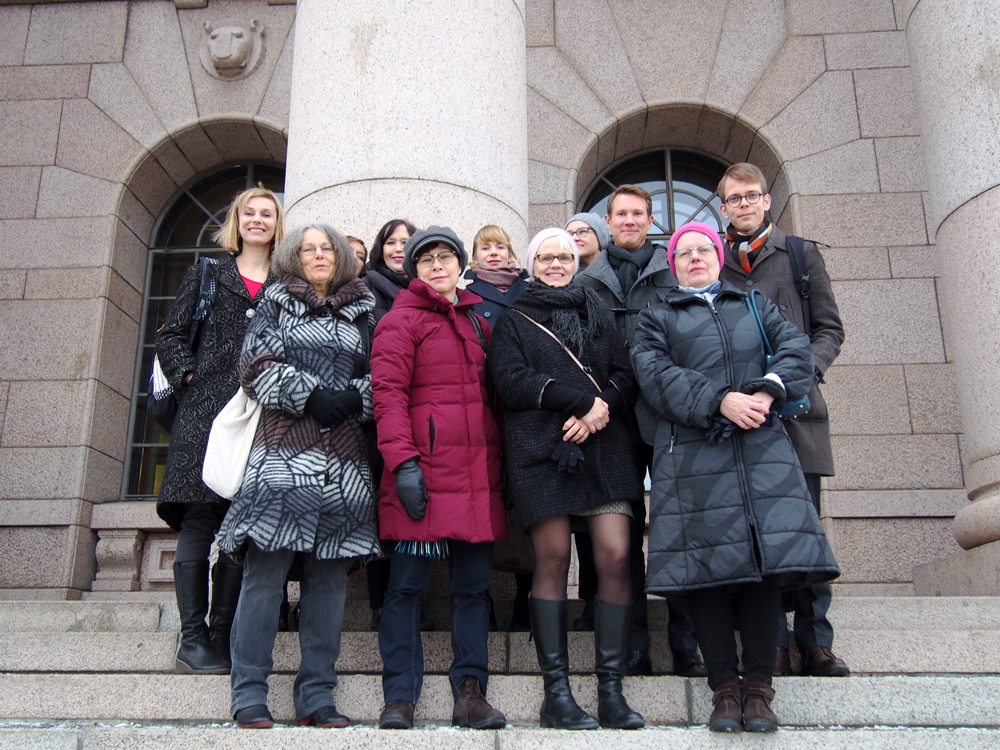
The National Council for Architecture had also stated that there was a need for an actor to raise the visibility of Finnish architecture. After a long lobbying process, in the early 2010s, Riitta Kaivosoja, Director General of the Ministry of Education and Culture, gave the green light to the architecture information centre. However, the initiative of its creation had to come from within the sector, which also had to demonstrate its need.
A specialist was recruited to assist the special advisor in carrying out a background study on the actors and operating environment in the field of architecture. Architect Jaana Räsänen, who had previously held the position of Regional Artist for the Arts Council of Uusimaa, was engaged in this task.
"The study aimed to identify areas of the architecture sector's social role and activities that were not adequately addressed by existing actors or that needed coordination and concentration of resources. Jaana's report provided a comprehensive view of the architecture field and these needs," says Valpola.
Towards an information centre
Alongside the survey, preparations were underway to set up an information centre. The practical preparatory work was carried out by the Apoli project staff, Valpola and Räsänen.
"In February 2011, the National Council for Architecture took the initiative to establish an independent architecture centre representing the entire field of architecture, inviting the field’s key players to a joint meeting with senior officials from the Ministry of Education and Culture. At the meeting, in which the survey results were presented, the key players expressed their willingness to cooperate. That meeting in March 2011 can be seen as the moment of conception of the organisation that would run the information centre," says Valpola.
The five organisations invited were the Finnish Association of Architects (SAFA), the Association of Finnish Architects’ Offices (ATL), the Foundation for the Museum of Finnish Architecture, the Alvar Aalto Foundation and the Building Information Foundation (RTS). The same actors are still members of the association that runs the information centre, the Finnish Centre for Architecture.
The association was founded in the autumn of 2011 and registered in February 2012. Tiina Valpola and Jaana Räsänen were transferred from the Apoli project to employees of the new association, and the financing was shifted from the Arts Council of Finland into the Ministry of Education and Culture budget.
The purpose of the association is stated in its constitution as follows:
The purpose of the Association is to promote the role of architecture in society and cooperation between the field of architecture, the building industry and other operators in the architecture sector. The Association supports and promotes local, national and international architectural policy, education, export and communication. To achieve its objectives, the Association maintains and manages an information and promotion centre.
In particular, architectural policy and architectural education were emphasised in the information centre’s activities. Valpola served not only as director but also as an expert on architectural policy and Räsänen as an expert on architectural education.
"At the time of setting up the centre, it was a logical strategic choice that the focus was on architecture policy and education. The Ministry of Education and Culture had significantly funded these since the 1990s, and through policy and education, the sector had developed strong contacts with ministries. Finnish architectural policy and education were also known at an international level. So a strong international profile and cooperation network already existed," says Valpola.
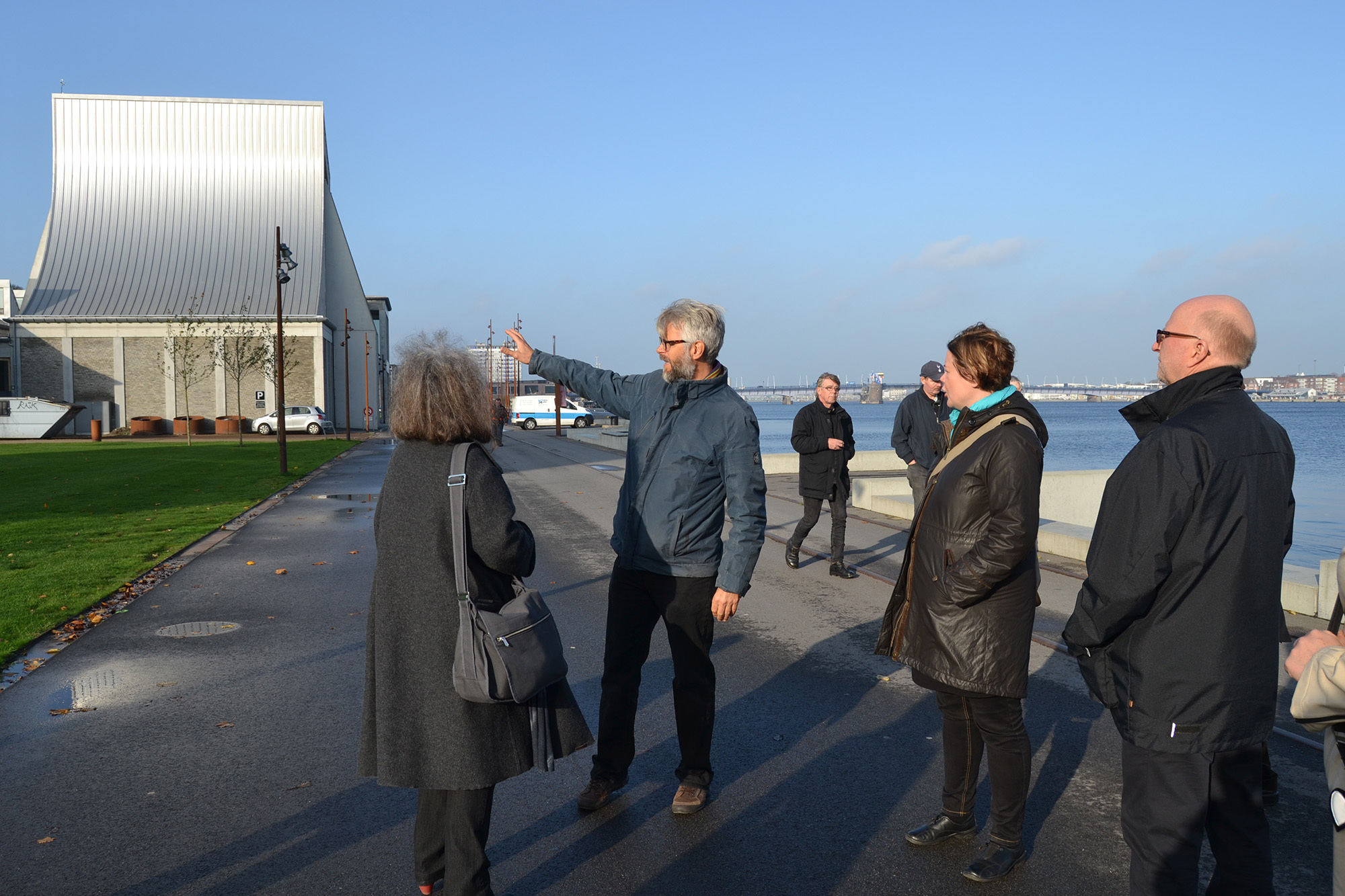
It was relatively easy to find a name for the association, Finnish Centre for Architecture, but it took time to find a suitable name for the information centre itself. The archives contain many interesting experiments with names: inspiration was sought, for instance, from the etymology of the Finnish language as well as from Latin and Greek.
"Naming is always difficult, as the public controversy over “Oodi” for Helsinki Central Library or “HAM” for Helsinki Art Museum shows. After settling on the full version of the name, Architecture Information Centre Finland – Arkkitehtuurin tiedotuskeskus in Finnish – we wanted an additional identifier that would also serve as a logo. Finally, a bit hastily not to delay the public launch of the centre, we decided on the English abbreviation Archinfo," Valpola explains.
Architecture Information Centre Finland was later simplified to Archinfo Finland, and in the 2022 identity and website renewal, the extended version of the English name was updated to Information Centre for Finnish Architecture. However, Archinfo, the name initially decided upon in a rush, has remained throughout the years.
The new operator needs a home
This year marks the 10th anniversary of Archinfo, which officially started its operations on 1 January 2013. However, the information centre was set into action already the previous year. The main effort was to find its own facilities and settle in.
"Initially, we explored the possibility of continuing in the premises of SAFA, where we had been based throughout the Apoli project, or moving to the premises of one of the other member organisations. However, it was considered important for Archinfo to have its own office premises in order to establish its independence and profile."
Archinfo found a home in a 1901 architectural gem along the Kasarmitori square, which was originally designed as a residential building for doctors by the famous architect trio Gesellius-Lindgren-Saarinen. The office was located in a back-side two-room flat overlooking the inner courtyard and needed renovation. The typical features of Jugend Stil architecture, such as a room height of well over three metres and an impressive fireplace covered with dark green glazed tiles, created a unique atmosphere. For me, as I came to work with Archinfo in 2017 and moved there from my previous employer SAFA's premises in a modernistic office tower from 1958, the warm and cosy atmosphere and stunning exterior architecture felt inspiring.
"One of our member organisations, the Building Information Foundation, was also moving to new premises, and we managed to compile almost all the furniture from what they didn’t need anymore," says Valpola.
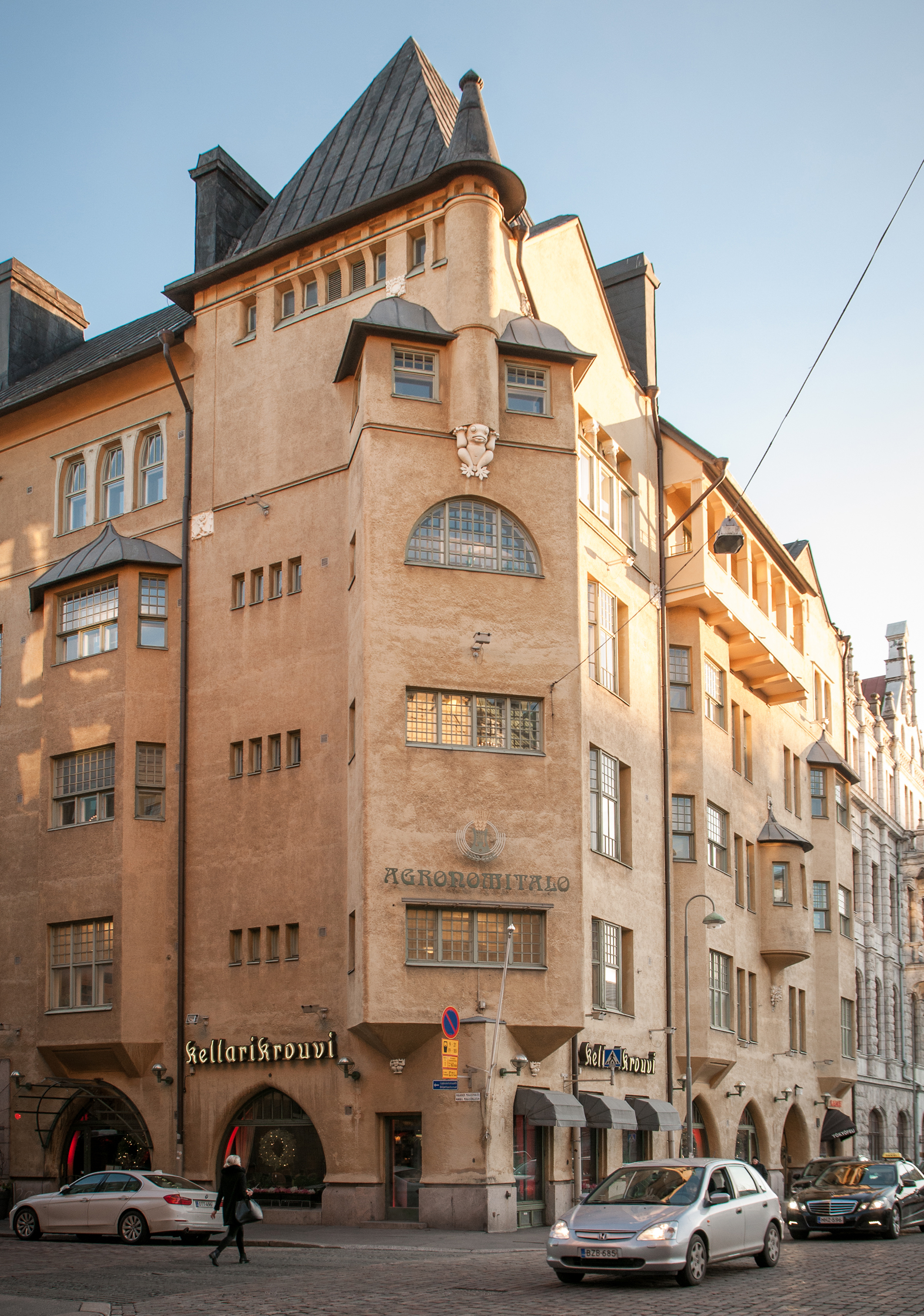
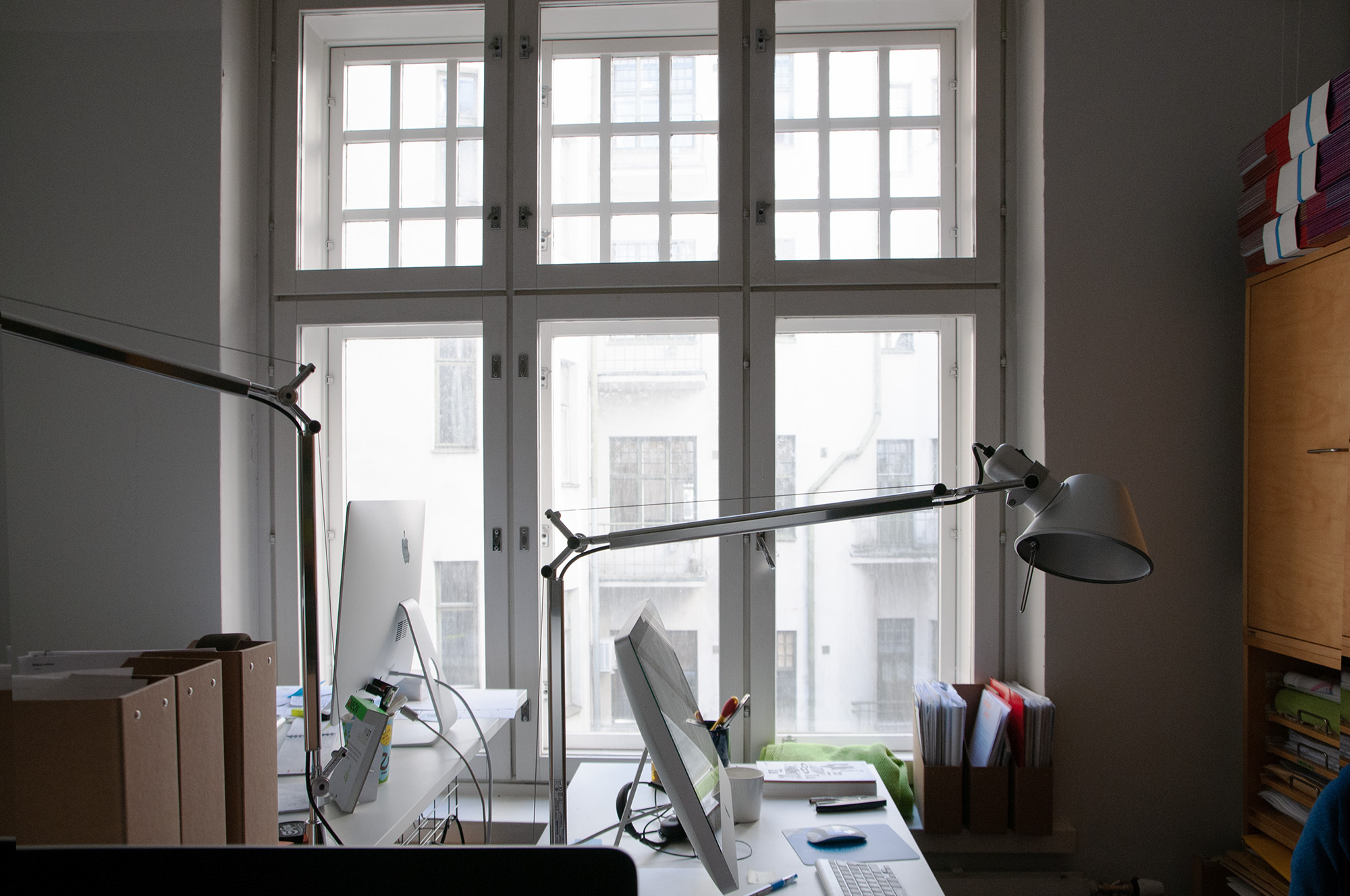
Launching the operations of the new information centre also included planning future activities and financial negotiations. The launch was financed by an allowance for organisations granted by the Ministry of Education and Culture, which is why the 2012 activities were organised under the Finnish Centre for Architecture association. From 2013 onwards, Archinfo has received an operating grant from the Ministry’s Arts Information Centres funding. This marked the establishment of Archinfo as one of the information centres for arts supported by the Ministry of Education and Culture.
"Many of the lobbying and development discussions with ministries and other parties were sought to be handled by a troika of the chair, vice-chair and executive director. For the first two years, architect Rainer Mahlamäki chaired the association, and Juulia Kauste, director of the Museum of Finnish Architecture, was vice-chair. Through the shared efforts, the Museum became a close partner in the early years," Valpola recalls.
Internationality is a two-way street
Besides launch activities and network building, Archinfo went full-on into operation already in 2012, for instance, by producing seminars and events. In the first full year of operation, 2013, the two-strong staff achieved surprisingly much. Among other things, Architecture Day was celebrated on Alvar Aalto's birthday on 3 February – an event that became an annual highlight and is now established as the Finnish Architecture and Design Days festival and a national flag-flying day.
"We thought bringing international experts to Finland was important to introduce new perspectives to the domestic debate. The 2013 Architecture Day seminar at Helsinki Music Centre by LPR Architects and completed in 2011, featured the Astrup Fearnley Museum in Oslo, designed by Renzo Piano Workshop and Narud-Stokke-Wiig, in addition to international work by Finnish architects," Valpola says.
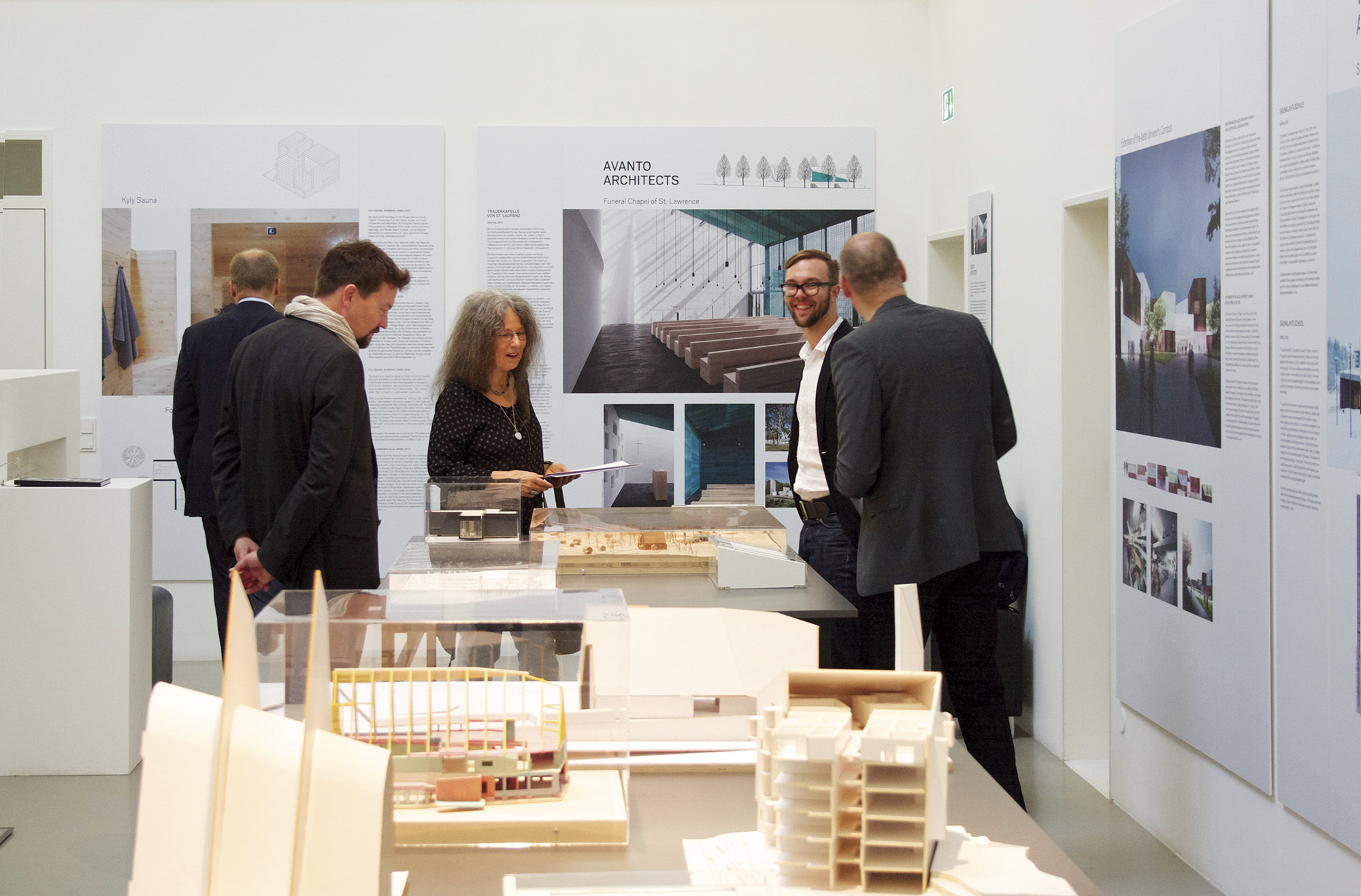
To architectural policy events, Archinfo invited topical international architects who promote current social, community and ecological aspirations to give talks.
"For example, the urban thinking of Gehl architects was already explored at the Apoli seminars in Helsinki and Turku in 2008 and 2011, and a lecture in Helsinki in 2013 by Ewa Westermark, a partner in the firm, attracted such a large audience that we had to change the venue at a few days' notice," Valpola recalls.
“As the director of Archinfo, I felt that acting as a facilitator for presenting current trends and new solutions in international professional know-how serves our core mission: to promote the social status and cooperation of architecture, as stated in the Finnish Centre for Architecture’s constitution. I believe that true internationality is built equally on the export and import of culture, and we tried to do both within the limits of our resources," Valpola continues.
Archinfo brought international speakers to Finland but also presented Finnish architecture to international audiences. An early example of this is producing, together with the Museum of Finnish Architecture, a wood installation Re-Creation by Lassila Hirvilammi architects for the Shenzen Bi-City Biennale of Urbanism exhibition, which opened in February 2013. Based on architect Anssi Lassila’s concept, the two-part installation was also shown at the Venice Architecture Biennale the following year, and in the summer of 2015, it was the highlight of a three-month event organised in the Esplanade park in Helsinki.
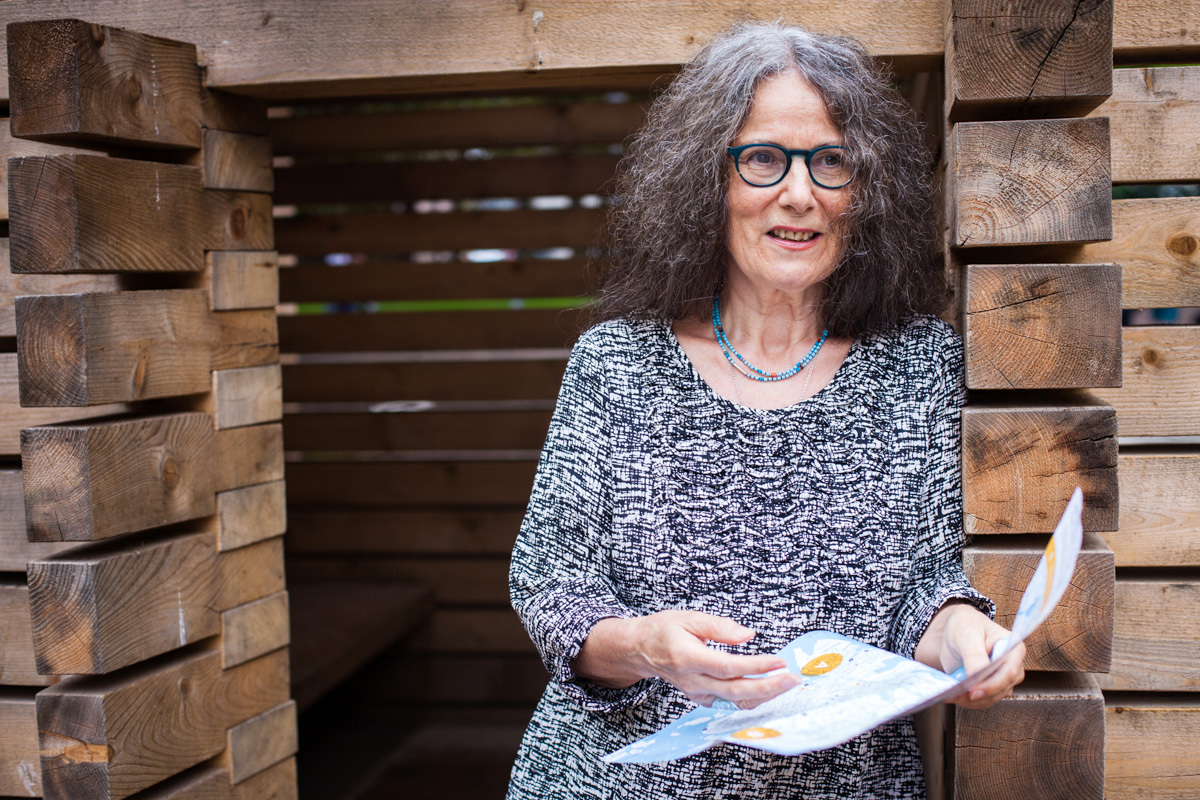
Archinfo gains digital visibility
At its launch, Archinfo had created digital visibility for itself by opening a Facebook account, and in May 2013, a temporary website was launched while the actual website was being designed. The permanent website was launched later that year, and not just one but two sites: an online publication in English, finnisharchitecture.fi, and a Finnish-language organisational website, archinfo.fi.
The English-language site was designed as a curated digital publication, a portal to Finnish architecture, publishing information and in-depth articles for an international audience. The Finnish site was more information-based, with separate sections on architecture policy and architecture education. Architect Anni Vartola was recruited at the end of 2013 to create content for the online publications. She developed Archinfo's digital channels and acted as part-time editor-in-chief of the websites for some two years.
"Looking back, our plan for a high-profile international online publication was quite ambitious, given our team’s small size and our other activities. However, during the time we were able to invest in it, it gave good visibility to Finnish architecture," Valpola reflects.
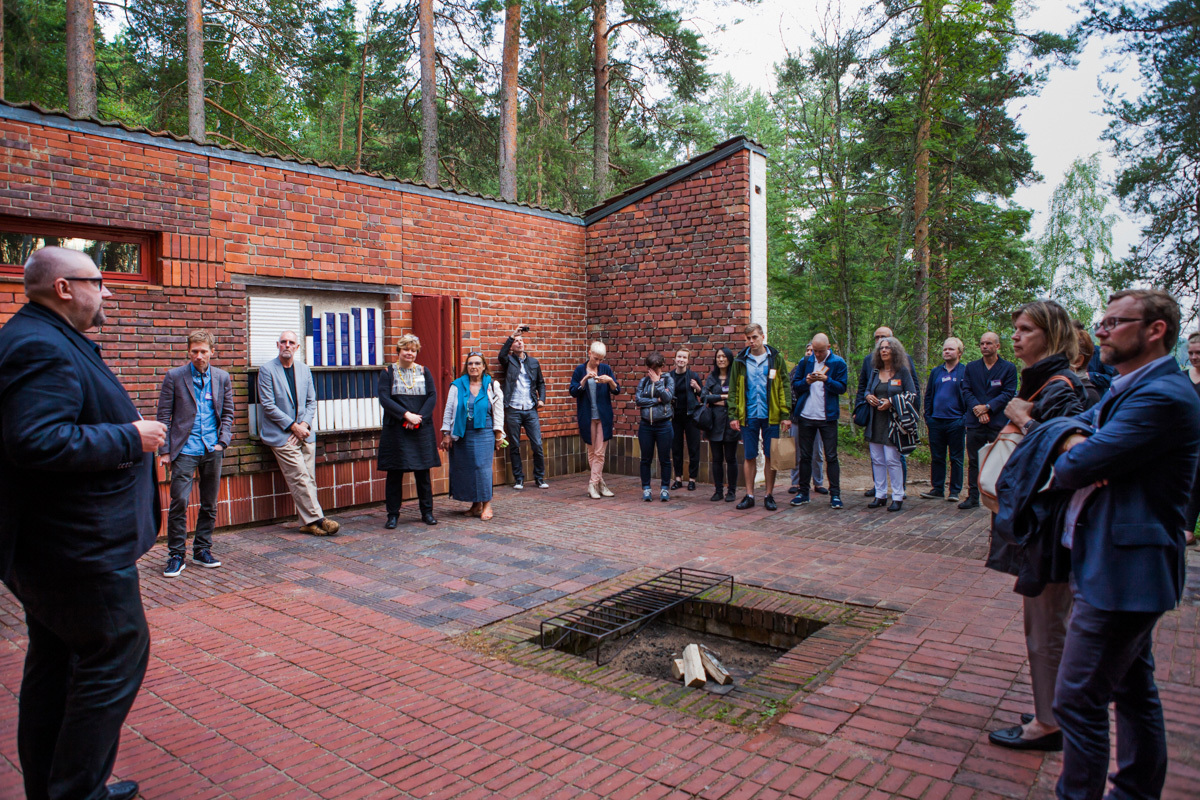
In 2013, Archinfo started recruiting a cultural producer, but the permanent staff wasn’t yet reinforced. However, at the end of the year, the information centre was revitalised when architect Asko Takala, who had previously headed The Association of Finnish Architects’ Offices (ATL), took over as Chair of the Finnish Centre for Architecture. The cooperation between the board and director was active.
"Asko became a close colleague of mine, and through him, our connection with ATL was strengthened. I also received much support from other board members, such as Tommi Lindh, Director of the Alvar Aalto Foundation, and Paula Huotelin, Secretary General of SAFA. Later, when Leena Rossi took to Chair SAFA, cooperation with the architects’ association became even stronger," says Valpola.
What has changed in ten years?
We'll continue with more on the years ahead in the following parts of our series, but let's still ask Tiina what similarities or differences she sees between the newborn information centre and the 10-year-old Archinfo.
"During my five years as Director, Archinfo's board included the heads of all five member organisations, so the information centre had strong and direct links with the organisations behind it. This improved both the flow of information within the sector and cooperation to increase the visibility of the field. Today, Archinfo may have grown out of that tight contact to some extent, although there is certainly still a need to continue searching for its own identity," reflects Valpola.
"The joint involvement of the architectural sector was perhaps more evident in the early days of Archinfo", she continues. "Today, Archinfo is increasingly geared towards reaching new audiences outside the profession, which I think is very important. However, I am a little concerned about the declining proportion of architects in the staff of organisations promoting the field."
"I am delighted that Archinfo has strengthened and grown. It's also great that architectural policy is again an important and relevant topic in Archinfo's activities, as it was in the beginning," Valpola closes the circle and calls out to the waiter: "And now we'll have a glass of Veneto's pinot grigio!" ••
